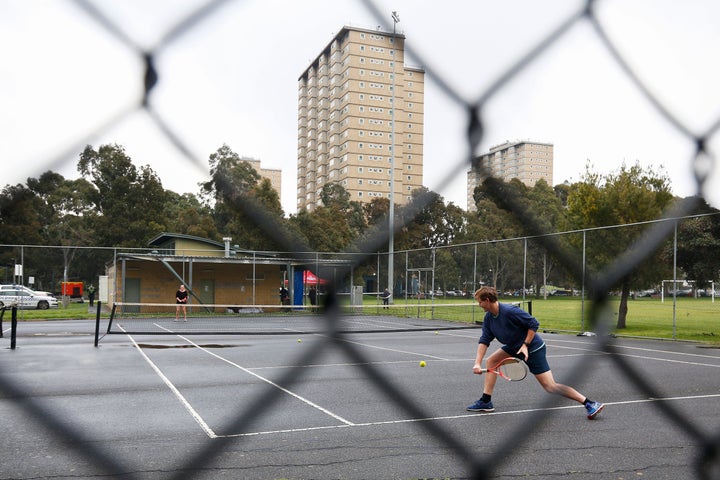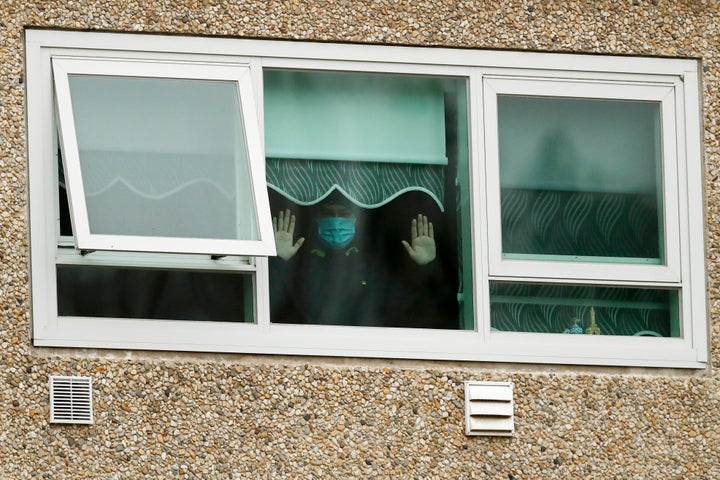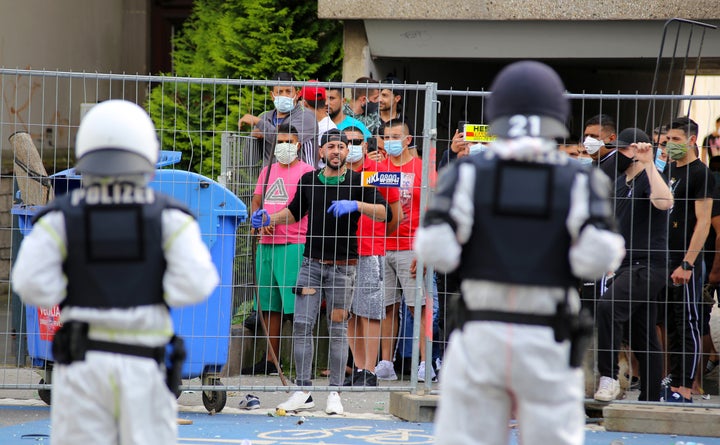On Saturday, without warning, more than 500 armed police officers surrounded nine public housing towers in Melbourne, Australia, and placed them under “hard lockdown,” after a number of residents tested positive for coronavirus. Under the hastily imposed restrictions, the harshest in the country so far, the buildings’ 3,000 residents have been banned from leaving their homes for any reason.
Government officials have argued that the draconian measures are necessary in order to prevent the coronavirus from spreading throughout the buildings, which are home to many poor, minority residents. Daniel Andrews, the premier of the Australian state of Victoria, said that the government would provide food, health care and other essential services for residents of the tower blocks.
“You will not be allowed to leave your unit, your dwelling within that tower, for any reason,” Andrews said. “This is not going to be a pleasant experience for those residents, but I have a message for those residents: This is not about punishment but protection.”
Those living in the towers say that the promised government support has failed to materialize, however, and that they have been unfairly singled out, and intimidated by the police presence.
After largely bringing the coronavirus pandemic under control, the virus has surged back in Australia in recent days. On Tuesday, 199 new cases were reported nationally, the biggest one-day rise since early April. Victoria was responsible for 191 of those cases — many of them in Melbourne, Australia’s second-largest city.
In response, the government is imposing a six-week, citywide lockdown beginning at midnight on Wednesday. But in contrast to the residents of the nine towers, other Melbourne residents will be allowed to leave their homes for work, exercise, grocery shopping and other essential business.
“This is overt classism and racism,” Tigist Kebede, a mental health counselor who used to live in the apartment complex and still has family there, wrote on Instagram. “This is not how we treated any other suburbs, apartment building or demographic of people.”

A similar dynamic is playing out in other countries that have largely managed to bring the coronavirus pandemic under control. As government authorities move away from broad, national lockdowns and toward more targeted interventions, the new restrictions often affect low-income, immigrant communities the most.
In Germany, hundreds of residents of an apartment building in Berlin’s Neukölln neighborhood, many of them poor, migrant families, were placed under quarantine last month following a coronavirus outbreak in the building. In the city of Göttingen, local authorities placed 700 residents of a housing complex in lockdown and erected a chain-link fence around the property, prompting clashes between residents and police.
The Italian government sent soldiers to the southern town of Mondragone, near Naples, last month to seal off a group of apartment buildings occupied by hundreds of migrant laborers, many of them Bulgarians who had come to the town to work as seasonal fruit pickers in the nearby fields.
The situation has created a tense standoff. Italian residents have gathered outside the sealed off area and chanted “Mondragone is ours,” while workers have protested what they say is racist discrimination.
Singapore, too, saw a surge in coronavirus cases in April, after successfully bringing the pandemic under control. The new cases were traced back to migrant worker dormitories on the outskirts of the city, where crowded rooms could house as many as 20 people. After initially placing dormitories under quarantine, the government is now racing to create additional housing for about 60,000 migrant workers by the end of this year, in order to reduce density in the dormitories.

The situation in Australia highlights the way in which outbreaks among some of society’s most vulnerable people are often met by a heavy-handed government response.
“I looked outside from my window and no nurses, no cleaners, no food — just lots of cops,” Emel Evcin, a 42-year-old mother of two told Reuters by phone from her two-bedroom flat. “This is not a lockdown, this is a lockup.”
“It doesn’t matter how well we behave, we’re still police and we’re everywhere. Of course it’s frightening,” a police officer at the apartment complex told the Guardian. “But we were the only ones here for the first 12 hours.”
Days after the nine apartment towers were placed in quarantine, residents say they are still struggling to obtain food and other support from the government, and what little food has been provided was often expired or culturally inappropriate for Muslim residents.
“We’re in survival mode,” Kebede told HuffPost Australia.
When the lockdown was announced on Sunday, the government anticipated that it would take at least five days to test every resident for coronavirus. But Andrews said the quarantine could potentially remain in place for 14 days.
“The strategy here is to complete the testing and then as soon as possible, once that testing is complete, to have those nine towers removed to the same footing that the rest of Melbourne will move to,” Andrews said on Tuesday.

In the absence of more robust government support, local volunteers and community groups have stepped in to provide fresh meals for residents.
“Despite early reports from the premier’s office, there has been minimal presence of officials from the Department of Health and Human Services on the ground, no clear chain of command amongst the deployed police officers, and no access to regular health care workers that residents rely on for their wellbeing,” a coalition of residents said in a statement on Tuesday, according to HuffPost Australia.
“Hundreds of community members have been left to plug the gap left by the Andrews Government’s punitive response and mismanagement,” the group said.
Indeed, residents have banded together — sharing food and medicine, and translating information about the lockdown restrictions and public health measures into 10 different languages in 24 hours.
They say the government’s response — essentially criminalizing low-income residents rather than helping them — shows a lack of trust and understanding on the part of local authorities, and serves only to stigmatize them while other members of society are burdened with fewer restrictions.
“The community has lived through the pandemic with the rest of Australia. Residents have been supporting each other to manage the risk of the pandemic since its outbreak in March,” the coalition of residents said.
“There shouldn’t be one rule for some and another rule for others in the same postcode.”
With reporting from HuffPost Australia and Reuters.
- Stay up to date with our live blog as we cover the COVID-19 pandemic
- 7 essential pieces of relationship advice for couples in quarantine
- What you need to know about face masks right now
- How to tell if you need to start doing online therapy
- Lost your job due to coronavirus? Here’s what you need to know.
- Parenting during the coronavirus crisis?
- The HuffPost guide to working from home
- What coronavirus questions are on your mind right now? We want to help you find answers.
- Everyone deserves accurate information about COVID-19. Support journalism without a paywall — and keep it free for everyone — by becoming a HuffPost member today.

